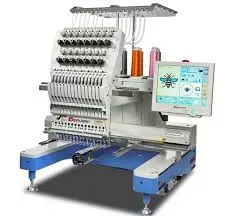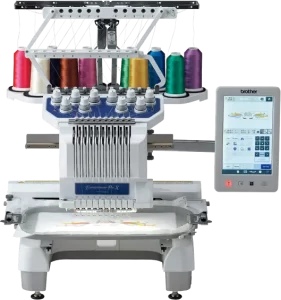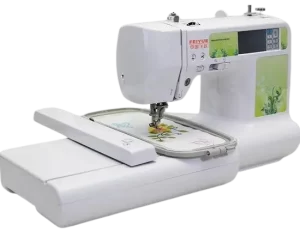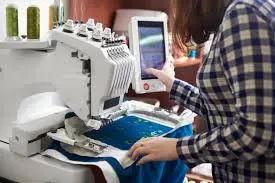Embroidery can turn simple fabric into a masterpiece, and it all begins with the right machine and the right files. Understanding machine embroidery files is essential for anyone looking to enhance their crafting skills or start a new hobby. In this blog, we will explore the 15 most common types of machine embroidery files, the machines that use them, and their respective limitations. We’ll even touch on which file types typically produce the best quality finishes.
Understanding Machine Embroidery Files
Before diving into the specific types, let’s clarify what machine embroidery files are. These files contain the information needed for an embroidery machine to recreate a design. This includes stitch types, sequence, and sometimes even color information. Choosing the correct file format is critical for ensuring that your embroidery machine can interpret the design accurately, thereby producing a high-quality finish.
The 15 Most Common Types of Machine Embroidery Files
Description: The DST format is one of the most widely used in the embroidery industry. It focuses specifically on stitch data.
Compatible Machines: Tajima, Brother, Baby Lock.
Limitations: While it’s popular, DST files lack color information, which means they only define the stitch sequence. This requires users to manually set thread colors in their machines, potentially leading to confusion.
Quality Finish: Generally good, but color inaccuracies can affect the final look if not carefully managed.
Description: The PES format is commonly associated with Brother and Baby Lock machines. It allows for a richer set of color data and stitch instructions.
Compatible Machines: Brother, Baby Lock.
Limitations: This format is primarily designed for Brother machines, making it incompatible with many other brands without conversion.
Quality Finish: Excellent, as it includes detailed stitch types and color information.
Description: Created for use with Janome machines, the JEF format provides a solid foundation for many embroidery projects.
Compatible Machines: Janome, Elna.
Limitations: Less popular than PES or DST, so it might not be supported by all embroidery software.
Quality Finish: Very good, provided the design is well digitized, but not the best if you aim for higher customization.
Description: The EXP format is used primarily for Melco embroidery machines and is known for its efficiency.
Compatible Machines: Melco, some Bernina models.
Limitations: It may lose details when converted to other formats, leading to less than optimal results.
Quality Finish: Good quality, but care should be taken during conversion to maintain design integrity.
Description: VP3 files are known for their versatility, developed primarily for Husqvarna and Viking machines.
Compatible Machines: Husqvarna, Viking.
Limitations: Older models may struggle with this file type, which can complicate accessibility for new users.
Quality Finish: High quality due to detailed design data, often preferred for intricate designs.
Description: The ART format is unique to Bernina and supports both vector graphics and stitch data.
Compatible Machines: Bernina.
Limitations: You need specific software to open and edit ART files, which can be a hurdle for some users.
Quality Finish: Exceptional quality; favored for complex designs that require precision.
Description: EMB files are meant for use with Bernina's software, allowing for easy editing of designs.
Compatible Machines: Bernina.
Limitations: Exclusively designed for Bernina machines and software; may not be useful for users on other platforms.
Quality Finish: Excellent, given its adaptability for edits, leading to a refined final product.
Description: An older format, SEW files are a simple solution for straightforward designs.
Compatible Machines: Baby Lock, Bernina, Viking.
Limitations: Limited features may restrict creative possibilities. Also, some details can be lost in translation.
Quality Finish: Decent for simple designs but may not hold up for intricate work requiring detail.
Description: A proprietary format mainly used by Singer machines, XXX files are available for users of this brand.
Compatible Machines: Singer.
Limitations: The XXX format has limited compatibility with non-Singer machines, requiring conversion for broader use.
Quality Finish: Generally good, but users may find the limitations frustrating when seeking high-end designs.
Description: Used primarily within Compucon machines, CSD files provide a basic format for embroidery.
Compatible Machines: Compucon.
Limitations: Lacks the depth and detail found in more popular formats, limiting its appeal.
Quality Finish: Fair, as customization is often limited.
Description: SHV is another format tailored for Husqvarna machines, offering good design quality.
Compatible Machines: Husqvarna.
Limitations: Compatibility issues may arise when using older or third-party software.
Quality Finish: Generally high, as this format is designed for quality output.
Description: QFX files are proprietary to Pfaff machines, providing designs that are optimized for their equipment.
Compatible Machines: Pfaff.
Limitations: Limited editing features and support make it challenging for those not using Pfaff machines.
Quality Finish: Good quality, especially for uncomplicated designs.
Description: Another specialized format for Pfaff embroidery machines, PHC files allow for customization in designs.
Compatible Machines: Pfaff.
Limitations: As with QFX, limited compatibility for those using non-Pfaff machines.
Quality Finish: Very good when used within the Pfaff ecosystem, supporting quality output.
Description: This format is often used with industrial machines, primarily focusing on stitch data.
Compatible Machines: Various industrial machines.
Limitations: Not widely supported, making it less accessible for hobbyists.
Quality Finish: High-quality finish due to its industrial nature, but more suited for commercial applications.
Description: FHE is tailored for designs created with Hatch software, optimized for home embroidery machines.
Compatible Machines: Various home embroidery machines.
Limitations: Limited to designs made in Hatch software, restricting users who want to work with multiple formats.
Quality Finish: Great quality, especially for users familiar with Hatch tools.
When it comes to embroidery, your choice of file format can significantly influence the final result. Formats like PES, VP3, ART, and EMB generally yield the best quality finished products due to their detailed stitch information and compatibility with advanced machines. Conversely, older or less common formats may restrict customization options and finish quality. Always ensure you understand the limitations of each format to avoid surprises during embroidery, especially for intricate designs.
As you venture into the world of machine embroidery, remember that practice makes perfect. Explore various file types, get familiar with your machine, and don’t hesitate to experiment. Happy stitching!
Feel free to share your experiences with different file formats and machines in the comments below. Your tips could help fellow crafters elevate their embroidery game!






Can I ask a quick question about your site? https://google.com/?Feara
RoFeara